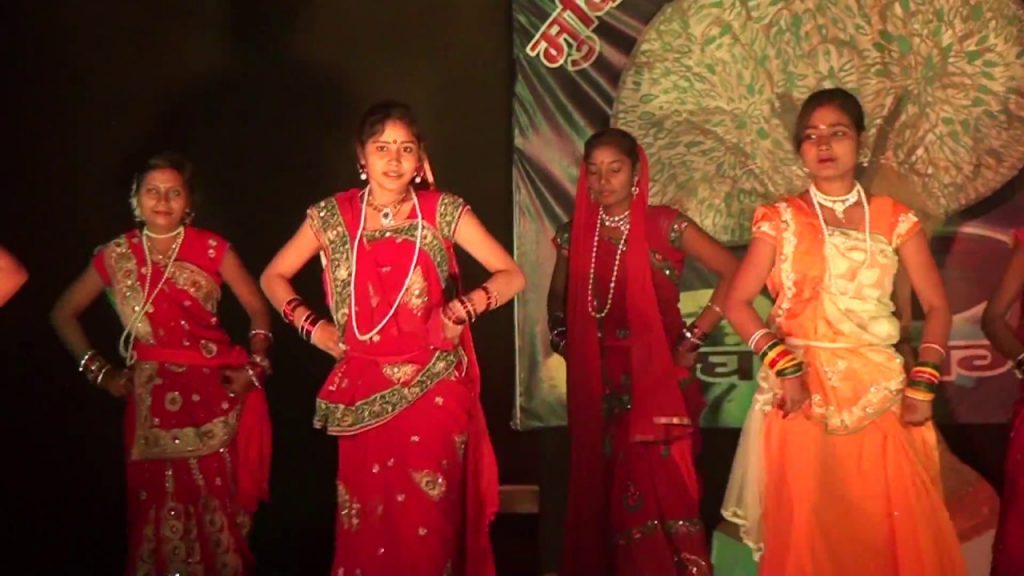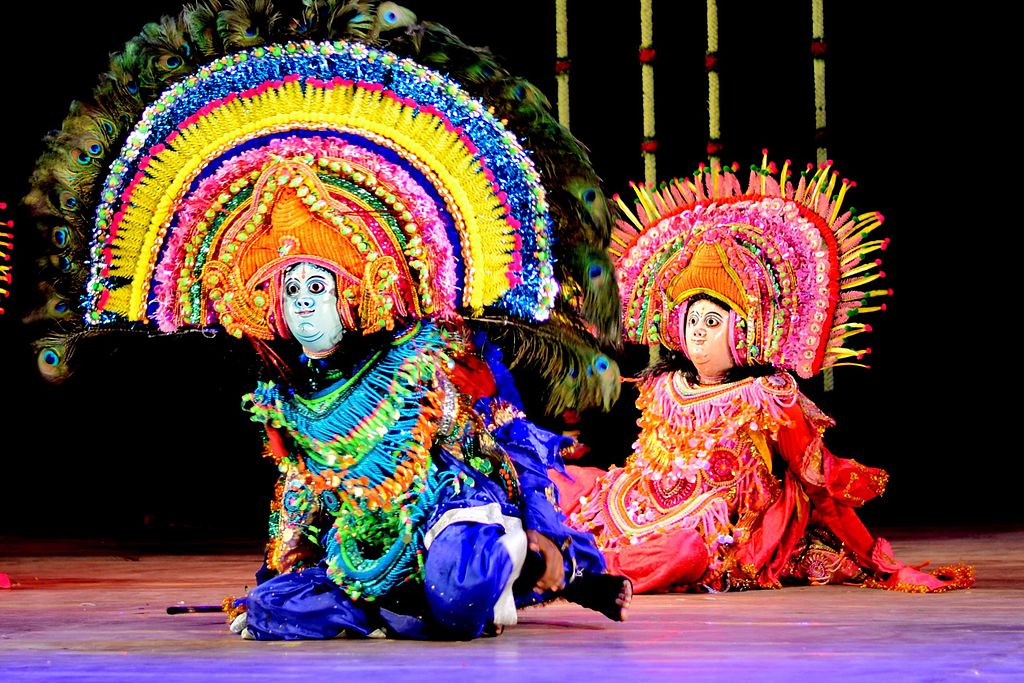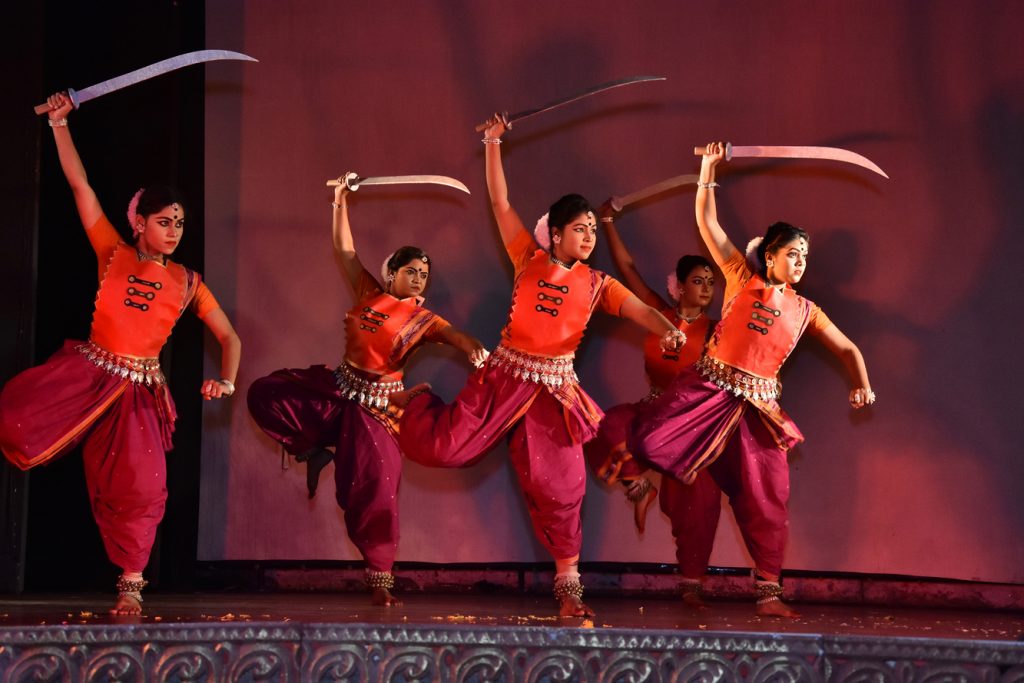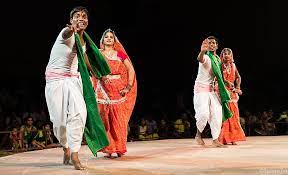Over thousands of years, various traditional dance forms have evolved in Bihar. The folk dance of Bihar is divided into three groups. First, the dance is performed during the poetry performance. The second stream is those of the tribal people that are closer to mother earth and their dances are heavily influenced by indigenous development. The third stream relates to the opposite regions of south Bihar. Most of the folk dances are religious in nature, in which, gods and goddesses are invoked through dance, performed to the rhythm of folk songs and music. Read the entire below article to know more about the Important folk dances of Bihar.
Table of Contents
Important Folk Dances of Bihar
Check the important folk dances of Bihar from the below table.
| Dance Form | Description |
|---|---|
| Jhijhian | Jhijhian is a popular folk dance form of Bihar, particularly performed in the Mithila region. It is a group dance performed by women during the auspicious festival of Teej. The dance is characterized by graceful movements, rhythmic footwork, and synchronized gestures. |
| Kajari Dance | Kajari Dance is a vibrant dance form that originated in the Bhojpuri-speaking regions of Bihar. It is performed by women during the Kajari festival, which falls during the monsoon season. The dance is a blend of graceful movements and rhythmic footwork, accompanied by melodious songs dedicated to Lord Krishna. |
| Chhau Dance | Chhau Dance is a traditional martial dance form that originated in the eastern regions of Bihar, particularly in the areas of Saraikela-Kharsawan, Seraikela, and Purulia. It combines elements of martial arts, acrobatics, and folk dance. Chhau Dance is performed by male dancers who wear vibrant masks and elaborate costumes representing various characters, including gods, demons, and animals. |
| Paika Dance | Paika Dance is a traditional dance form of Bihar associated with the martial art form called Paika Vidya. It originated in the ancient kingdom of Magadha and was performed by the warrior class known as Paikas. Paika Dance involves a series of agile and powerful movements, representing the various techniques of warfare. |
Folk Dances of Bihar with Pictures
Check the below section to know more about the Folk Dances of Bihar with Pictures.
Jhijhian
Jhijhian dance is another dance style popular in Bihar. This is often a ritualistic dance performed during no-rain time and aims at making the God of rain happy. The dance is amid a song that is full of prayers to Lord Indra, the Rain God.
The participants of the dance include a lead singer, a harmonium player, a flutist, and a dholak player. This is often woman only a dance show.

Kajari Dance
Kajari songs basically sung during monsoon season. The dance form called Kajari Dance accompanies these songs. The dance starts within the month of ‘Shravan’ or the starting of the monsoon season every year and lasts for the entire duration of rain.
These songs describe how wonderful the earth has become thanks to rain and how happy and pleasant people are. These songs, combined with dance, are a showcase of rich culture and tradition of Bihar.

Chhau Dance
Chhau performers are seen holding shields and swords as they perform. Forms a serious aspect of this folk dance in India is the 3 important elements from classical dance, Raga (melody), Tala (rhythmic timing), and Bhava (mood). The dance form portrays the animal world and nature confirmed with different forms like Sarpa Nritya (serpent dance), Sagara Nritya (ocean dance), and Mayura Nritya. Themes from lifestyle and mythology also form a part of the Chhau dance. Unlike many other sorts of Indian dances, Chhau dance is about vitality and robustness. Powerful and poetic happens to be visual communication.

Paika
Another popular dance sort of Bihar is Paika. The dance reminds us of the infantry and its agility, courage, and excitement. The dance is popular, particularly within the Mayurbhanj region. Flat ground is important for its performance.
This dance displays the talents & the ability of the dancers to handle these weapons. The dance reaches its climax with the fast beats produced by `Mandal`. Performers wear colorful turbans and tight dhotis and substitute two rows.
Holding the wooden swords and shields in their hands, warriors engage in fierce mock combat.

Bidesia
Bidesia is the most popular folk dance of the Bihar people. The dance is claimed to have originated in the 20th century. It’s a folk theatre form that is prevalent in the Bhojpuri-speaking regions of Bihar. Bihari Thakur is believed to be the daddy of this dance style. He raised conflicting issues prevailing in society. Conflicting trends between rich and poor, upper crust and lower class, upper caste and lower caste, urban and poor dwellers etc. were his themes.
He used dance as a form to place his views on the ground and among people. Biraha songs combined with dance become an efficient medium. Bidesia may be a dance version of Biraha songs.

Jat-Jatin
Jat-Jatin is a traditional folk dance form of Bihar, a state in eastern India. It is primarily performed by the Yadav community, who are predominantly engaged in agriculture and animal husbandry. Jat-Jatin dance is characterized by energetic movements, rhythmic footwork, and vibrant costumes. It is usually performed by a group of men, who form a circle or a semi-circle. The dancers wear traditional attire, including a dhoti (a cloth wrapped around the waist) and kurta (a loose-fitting shirt), along with colorful turbans.

Folk Dances of Bihar FAQs
Bihar has a rich cultural heritage, and several folk dances are performed in the state. Some popular folk dances of Bihar include Jat-Jatin, Jhijhian, Jhumar, Sohrai, Dhobiya, Kathghorwa Nach, Jitiya, and Bidesia.
Jat-Jatin is a famous folk dance of Bihar that is performed by men and women. It is usually performed during weddings and social gatherings. The dancers form a circle and move in a synchronized manner, depicting various agricultural activities and celebrating the arrival of the monsoon season.
Sohrai dance is a tribal folk dance of Bihar, primarily performed by the Kurmi community. It is associated with the Sohrai festival, which marks the harvesting season. The dancers, dressed in colorful traditional attire, perform rhythmic movements to the beats of drums and other percussion instruments.
Folk dances of Bihar are commonly performed during cultural events, fairs, festivals, and weddings in the state. You can experience these vibrant dance forms in various regions of Bihar, including rural areas, towns, and cities during festive occasions.
Yes, traditional musical instruments play a vital role in accompanying the folk dances of Bihar. Some commonly used instruments include dhol (a large drum), shehnai (a wind instrument), flute, nagara (kettle drum), and manjira (small cymbals).

